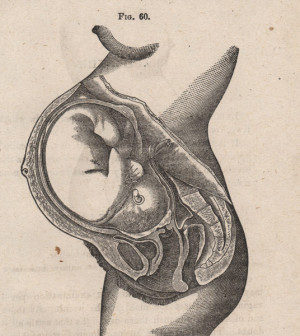- Skip Storing This Everyday Product in the Fridge Door
- Green Tea + B3 Pairing May Boost Brain Health
- Navigating Your Midlife Crisis: Embracing New Possibilities
- City Raccoons Showing Signs of Domestication
- Mapping the Exposome: Science Broadens Focus to Environmental Disease Triggers
- One Week Less on Social Media Linked to Better Mental Health
- Your Brain Changes in Stages as You Age, Study Finds
- Some Suicide Victims Show No Typical Warning Signs, Study Finds
- ByHeart Formula Faces Lawsuits After Babies Sickened With Botulism
- Switch to Vegan Diet Could Cut Your Greenhouse Gas Emissions in Half
First U.S. Uterus Transplant Patient Grateful for Chance to Have Children

The first American woman to receive a uterus transplant said Monday that she is grateful for the chance to try to have a child.
Speaking at a morning news conference two weeks after her surgery, the 26-year-old woman — identified only as Lindsey — said that although she and her husband have adopted three kids, she has still longed to give birth to her own child.
“At 16, I was told I would never have children. From that moment on, I prayed that God would allow me the opportunity to experience pregnancy,” she said.
The Cleveland Clinic doctors who performed the transplant said they plan to do nine more such transplants as part of a research study. The uteruses will come from deceased organ donors. In Lindsey’s case, the uterus came from a woman in her 30s who died suddenly.
“Our first transplant took place on Feb. 24, and our patient is doing very well,” Dr. Andreas Tzakis, program director of the Transplant Center at Cleveland Clinic, said during the news conference.
But the doctors added that Lindsey’s journey is just beginning.
“Uterine transplant is not just about moving a uterus from here to there. It’s about having a healthy baby,” Dr. Rebecca Flyckt, an ob/gyn surgeon at Cleveland Clinic, said at the news conference. “That goal is still a couple of years away.”
Before the transplant, Lindsey had six to 10 of her eggs harvested, fertilized with her husband’s sperm, and frozen. After a year, these embryos will be implanted in her transplanted uterus, and she hopes to give birth by cesarean delivery nine months later.
After that, she can wait a year and try to have another child. After two pregnancies, the transplanted uterus will be removed or allowed to wither and disappear on its own, her doctors said.
Embryo transplants are used in this process because the fallopian tubes, which carry a fertilized egg to the uterus, are missing.
The doctors said they are putting a limit on how long the uterus remains in the body because women have to take powerful drugs to prevent the body from rejecting the uterus, and they do not want women to have to take these drugs their entire life.
Although this is the first U.S. uterus transplant, the technique was pioneered in Sweden. As of last September, nine transplants have been performed, resulting in five pregnancies and four births. The children born to these women are all doing well, the Cleveland Clinic researchers said during the news conference.
In Sweden, the transplanted uteruses were all from live donors.
About one in 5,000 women is born without a uterus.
The hope is that uterus transplants will give women without a uterus another option beyond adoption or surrogacy, Dr. Ruth Farrell, a bioethicist at Cleveland Clinic, said during the news conference.
“Despite the name uterine transplant, the focus is not on the uterus, it’s on women and children and families,” she said.
More information
For more on uterus transplants, visit the Cleveland Clinic.
Source: HealthDay
Copyright © 2025 HealthDay. All rights reserved.










